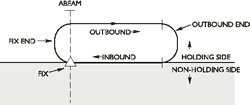Aero-Tips!
A good pilot is always learning -- how many times have you heard
this old standard throughout your flying career? There is no truer
statement in all of flying (well, with the possible exception of
"there are no old, bold pilots.") It's part of what makes aviation
so exciting for all of us... just when you think you've seen it
all, along comes a scenario you've never imagined.

Aero-News has called upon the expertise of Thomas P. Turner,
master CFI and all-around-good-guy, to bring our readers -- and us
-- daily tips to improve our skills as aviators, and as
representatives of the flying community. Some of them, you may have
heard before... but for each of us, there will also be something we
might never have considered before, or something that didn't
"stick" the way it should have the first time we memorized it for
the practical test.
It is our unabashed goal that "Aero-Tips" will help our readers
become better, safer pilots -- as well as introducing our
ground-bound readers to the concepts and principles that keep those
strange aluminum-and-composite contraptions in the air... and allow
them to soar magnificently through it.
Look for our daily Aero-Tips segments, coming each day to you
through the Aero-News Network. Suggestions for future Aero-Tips are
always welcome, as are additions or discussion of each day's tips.
Remember... when it comes to being good pilots, we're all in this
together.
Aero-Tips 03.06.06
Some IFR pilots never get holding patterns outside of training.
Others are assigned holds all of the time. I know in rural areas
where I’ve been based (Sedalia, Missouri and Cleveland,
Tennessee come to mind), holding patterns were a part of nearly all
takeoff clearances, as a way to enter the ATC system from beneath
the base of radar coverage.
In training we learn all sorts of gyrations about holding
pattern entries and timing the inbound and outbound legs... all
good things to know, to help in orientation and visualization
(moving map displays notwithstanding), and to be able to predict
what you need to do next. The reality is, however, that holding
patterns no longer serve a primary purpose for which they were
designed -- to sequence airplanes for an approach in the days
before widespread ATC radar. Our fathers and grandfathers "stacked
up" in holding patterns of precise times inbound and outbound so
controllers could "shuffle off the bottom of the deck" and get them
on the ground as quickly as possible. We rarely do that now.
Not to minimize the importance of proper holding procedures,
from an ATC standpoint it’s far more critical that we stay in
our protected holding space than the precise nature of our
maneuvers within that space. And that gives us a great deal of
room. Look at the diagram.
 When we’re cleared for a hold,
we’re cleared for a block of airspace that extends:
When we’re cleared for a hold,
we’re cleared for a block of airspace that extends:
- Eight nautical miles from the fix on the "outbound" side of the
fix
- Four nautical miles on the "inbound end" of the fix
- Eight miles on the "holding side," and
- Four miles on the "nonholding side."
This gives us a 12 nm x 12 nm block of airspace, 144 square
miles all our own. As long as we stay at our assigned altitude,
controllers really only care that we stay "up on this shelf" until
they (or we) make a decision where to go next.
Aero-tip of the day: It won’t get you
through a checkride, but don’t worry too much if you
don’t fly a "textbook" holding pattern if distracted by wind
or other factors. It is vital, however, to stay on
assigned altitude and within the 12 x 12 block.
 Airborne-Flight Training 05.09.24: ERAU at AIAA, LIFT Diamond Buy, Epic A&P
Airborne-Flight Training 05.09.24: ERAU at AIAA, LIFT Diamond Buy, Epic A&P ANN's Daily Aero-Term (05.07.24): Hazardous Weather Information
ANN's Daily Aero-Term (05.07.24): Hazardous Weather Information Aero-News: Quote of the Day (05.07.24)
Aero-News: Quote of the Day (05.07.24) NTSB Final Report: Cessna 150
NTSB Final Report: Cessna 150 Aero-News: Quote of the Day (05.08.24)
Aero-News: Quote of the Day (05.08.24)




